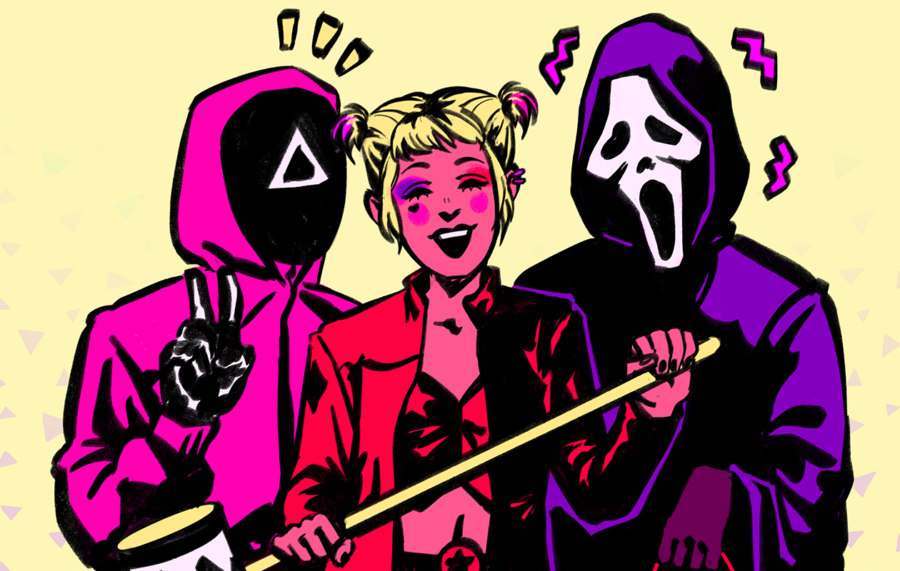Every horror enthusiast and candy lover’s favorite time of year is coming up. Halloween is a holiday that anyone, no matter what religion, race or background can celebrate. People dress up as their favorite celebrities, movie characters and fictional beings. Kids trick or treat, apples are bobbed for, pumpkins are carved. When there are so many traditions for one day, it begs the question “Where did it all come from?”
Over 2,000 years ago, the Celts celebrated a traditional celebration on Oct. 31. According to an article by History.com, this event was called Samhain (pronounced “SAH-win”). It was believed that on this day the realms of the living and dead overlapped.
During this celebration, those observing would dress up in costumes, light fires and perform rituals that were said to ward off ghosts and help ancestors cross over without being stolen by fairies. People would wear animal skins and masks to play tricks on one another. They soon realized that, when in disguise, they can get away with almost anything.
In the mid-1550s, a new tradition inspired by this Celtic event arose called Allhallowtide. Allhallowtide, as told by Thomas L. McDonald in The Catholic World Report, is a three-day celebration of All Hallows Eve, All Saints Day and All Souls Day. During these three days, peasants would partake in a practice known as “souling” in which they would go house to house begging for food and treats dressed as souls of the dead, demons and spirits.
A few centuries later, as the Irish and Scottish immigrated to America, Americans embraced their traditions and superstitions. Masks were a large part of Halloween at the time, since the goal was to be in disguise. Most costumes were handmade using whatever materials were available at home.
Fast forward to the 1900s and Halloween is less about spirits and folklore and has become more of a reason to party and spend time with family and friends. People begin ditching the idea of masks and animal skins and start dressing like the infamous characters they see on T.V. such as Mickey Mouse, Popeye and Orphan Annie.
Brands see this as an opportunity to commercialize the holiday and ready-to-wear costumes are put on the market, eliminating the hassle of homemade costumes. Candy companies also see the opportunity to capitalize on trick or treating. Thus, Halloween, as it is known today, is developed.
Although the focus of modern-day Halloween tradition is no longer on the crossover of the dead, it is still greatly inspired by its original roots. People still often get their costume inspiration from pop culture figures. For example, the most common costumes this year are predicted to be inspired by the popular Netflix show “Squid Game.” Characters like Harley Quinn, Loki and Cruella are expected to be seen quite frequently as well. Masks are also still common for costumes based on characters like Chucky, Ghostface and Freddy Krueger.
Today’s idea of the holiday is geared towards dressing up and partying; however, the original premise of disguise is still there. Halloween is a night to be someone you are not. Modern costumes may not scare away demons and spirits, but they are a great form of self-expression. Halloween is an opportunity to step away from the stress of everyday life and become someone or something else for a night.
SUPPORT STUDENT MEDIA
Hi, I’m Grace Avery, a senior fashion merchandising student from Columbia, Maryland! I’m also the editor-in-chief of A Magazine. My staff and I are full of passion and aspiration as we commit our work to bring you the most meaningful and entertaining news from the realms of fashion, beauty, and culture. Our team is full-time students and hard-working journalists. While we get support from the student media fee and earned revenue such as advertising, both of those continue to decline. Your generous gift of any amount will help enhance our student experience as we grow our community into working professionals. Please go here to donate to A Magazine.












